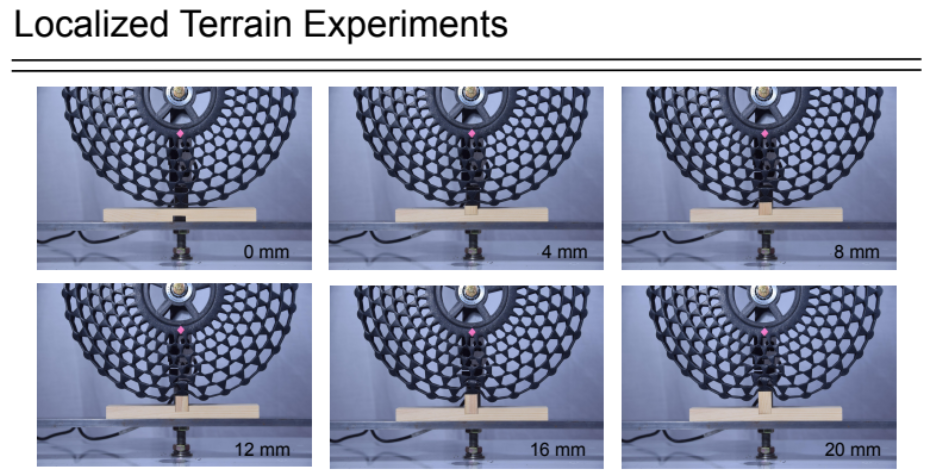Airless tire with improved performance
A non-pneumatic tire using topological polarization and protection to improve asperity accommodation and tire durability.

Applications
- Vehicle (automobiles and robots) tire
- Manufacturing method
Key Benefits & Differentiators
- Capable of handling extreme asperties in the terrain
- Longer lifetime with retained performance
- More cushioned ride compared to other non-pneumatic tires
- Suitable for a wide range of terrains
Non-pneumatic tires as a viable alternative to conventional air-filled tires
Non-pneumatic tires, tires that are not supported by gas pressure, offer several advantages over conventional pneumatic (air-filled) tires. Though potentially viable, existing non-pneumatic tire constructions and designs are less than optimal. For example, non-pneumatic tires are often significantly stiffer than their pneumatic counterparts, which results in substantially less-cushioned ride and therefore contributes to slower adoption in the automotive industry. Additionally, non-pneumatic tires are typically heavier than pneumatic tires. Non-pneumatic tires have an equivalent and sometimes shorter lifespan than pneumatic tires because of reliance on buckling of the spokes to bear loads.
To address these issues, researchers at the University of Minnesota have designed and developed a non-pneumatic tire that offers extreme asperity accommodation (i.e. high cushion) and better durability compared to existing options. This technology uses topological polarization principles in rolling devices for enhanced local absorption of terrain asperities. Increased localized softness along the outer radius prevents transferring of significant forces to the axle, thereby increasing cushion. This technology also utilizes topological protection principles to increase resistance to performance deterioration from the erosion of material caused by wear in rolling devices, thereby increasing its durability and duration of usability.
Phase of Development
TRL: 3-4A working prototype of the tire design has been manufactured through PolyJet 3D printing. Promising results have been recorded demonstrating the capability of the tire design to handle local asperities in the terrain while maintaining practical weight-bearing capabilities for more distributed loads.
Desired Partnerships
This technology is now available for:- License
- Sponsored research
- Co-development
Please contact our office to share your business’ needs and learn more.
Researchers
- Stefano Gonella, PhD, Professor, Department of Civil, Environmental, and Geo- Engineering
-
swap_vertical_circlelibrary_booksReferences (1)
- Zunker, William, and Stefano Gonella. , "Soft topological lattice wheels.", Extreme Mechanics Letters 46 (2021): 101344.
-
swap_vertical_circlecloud_downloadSupporting documents (0)